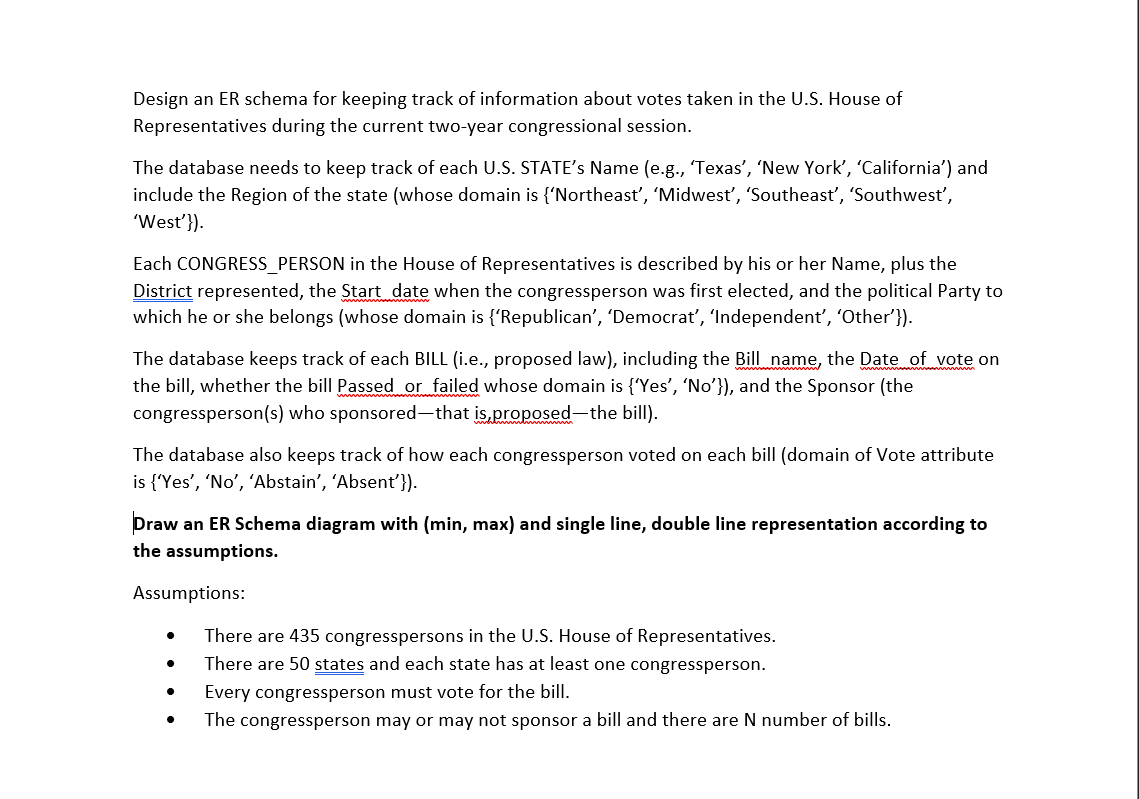Home /
Expert Answers /
Computer Science /
design-an-er-schema-for-keeping-track-of-information-about-votes-taken-in-the-u-s-house-of-repres-pa928
(Solved): Design an ER schema for keeping track of information about votes taken in the U.S. House of Repres ...
Design an ER schema for keeping track of information about votes taken in the U.S. House of Representatives during the current two-year congressional session. The database needs to keep track of each U.S. STATE's Name (e.g., 'Texas', 'New York', 'California') and include the Region of the state (whose domain is \{'Northeast', 'Midwest', 'Southeast', 'Southwest', 'West'\}). Each CONGRESS_PERSON in the House of Representatives is described by his or her Name, plus the District represented, the Start date when the congressperson was first elected, and the political Party to which he or she belongs (whose domain is \{'Republican', 'Democrat', 'Independent', 'Other' \( \} \) ). The database keeps track of each BILL (i.e., proposed law), including the Bill name, the Date of vote on the bill, whether the bill Passed or failed whose domain is \( \{ \) 'Yes', 'No'\}\}), and the Sponsor (the congressperson(s) who sponsored-that is,proposed-the bill). The database also keeps track of how each congressperson voted on each bill (domain of Vote attribute is \( \{ \) 'Yes', 'No', 'Abstain', 'Absent' \( \}) \). Draw an ER Schema diagram with \( (\min , \max ) \) and single line, double line representation according to the assumptions. Assumptions: - There are 435 congresspersons in the U.S. House of Representatives. - There are 50 states and each state has at least one congressperson. - Every congressperson must vote for the bill. - The congressperson may or may not sponsor a bill and there are \( \mathbf{N} \) number of bills.
